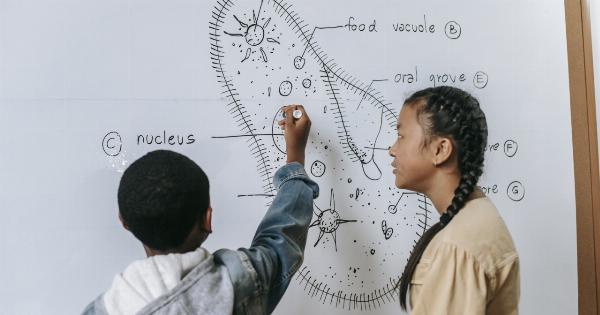A team of researchers from the St. Jude Children’s Research Hospital in Memphis, Tennessee recently published a study in the journal Nature Genetics that identified a genetic mutation linked to childhood leukemia.
The study sheds light on the underlying causes of this aggressive form of cancer and could lead to more effective treatments.
Leukemia: a deadly disease that affects children
Leukemia is a cancer of the blood and bone marrow that can affect people of all ages. However, it is more commonly diagnosed in children.
According to the American Cancer Society, leukemia is the most common cancer in children and teenagers, accounting for about 30% of all childhood cancers.
There are different types of leukemia, and they are classified based on the type of blood cell that is affected. The most common types of childhood leukemia are acute lymphoblastic leukemia (ALL) and acute myeloid leukemia (AML).
These two types account for more than 95% of all childhood leukemia cases.
Treating childhood leukemia involves complex and aggressive therapies, including chemotherapy, radiation therapy, and stem cell transplant.
While survival rates have improved over the years, leukemia remains a deadly disease, especially when it is aggressive and resistant to treatment.
CREBBP: The genetic mutation identified
The study conducted by the researchers from St. Jude Children’s Research Hospital focused on identifying genetic mutations that are associated with aggressive forms of childhood leukemia.
The team analyzed the DNA of 1,164 children with ALL and identified a genetic mutation in the CREBBP gene as a potential driver of the disease.
The CREBBP gene is responsible for encoding a protein involved in the regulation of gene expression.
Mutations in this gene have been previously linked to other types of cancer, but this is the first time that a mutation in CREBBP has been identified as a driver of childhood leukemia.
The researchers found that the CREBBP mutation was present in about 7% of the children with ALL in their study. They also found that the presence of the mutation was associated with poorer treatment outcomes and a higher risk of relapse.
How the genetic mutation affects leukemia development
The researchers also investigated how the CREBBP mutation affects the development of leukemia.
They found that the mutation leads to a decrease in the activity of T cells, which are white blood cells that play a crucial role in the immune system’s response to cancer.
The researchers believe that the decrease in T cell activity allows leukemia cells to evade the immune system and grow unchecked. This could explain why children with the CREBBP mutation have a poorer prognosis and are at a higher risk of relapse.
Implications for treatment
The identification of the CREBBP mutation as a driver of childhood leukemia has important implications for the development of new treatments.
The researchers believe that drugs that target the CREBBP protein could potentially be used to treat leukemia in children with the mutation.
The researchers also found that children with the CREBBP mutation are more likely to respond to treatment with immunotherapy, a type of therapy that uses the body’s own immune system to fight cancer.
This suggests that immunotherapy could be an effective treatment option for children with this type of leukemia.
The future of childhood leukemia research
The discovery of the CREBBP mutation is a significant step forward in our understanding of childhood leukemia.
It highlights the role of genetic mutations in the development and progression of this disease and opens up new opportunities for targeted treatments.
Further research is needed to fully understand the mechanisms underlying the CREBBP mutation’s role in leukemia and to develop effective treatments based on this understanding.
However, the identification of this mutation is a promising step in the fight against childhood leukemia.
Conclusion
The identification of the genetic mutation linked to childhood leukemia is a significant development in our understanding of this deadly disease.
The discovery of the CREBBP mutation could lead to more targeted and effective treatments for children with leukemia, improving their chances of survival and reducing the risk of relapse.
While further research is needed to fully understand the implications of this discovery, it is clear that this represents an important step forward in the fight against childhood leukemia.































